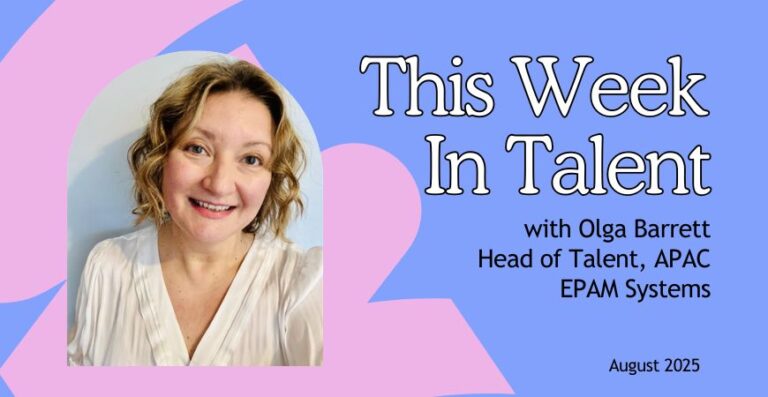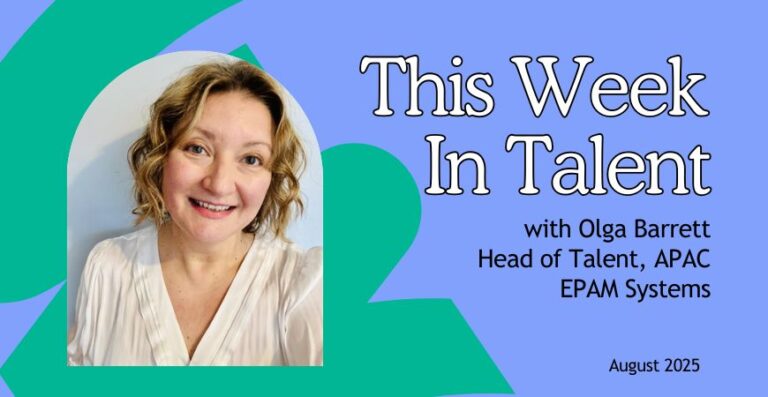There are many decisions to consider in structuring and transforming your recruitment team to be Talent Advisory.
At the recent Talent Advisory Conference, we harnessed the collective intelligence in the room to discuss and solve some of the most challenging scenarios around moving to a Talent Advisory model. What will your reporting structure look like? What about the impact of GenerativeAI? What would happen if we didn’t move to Advisory, but instead stuck to Talent Acquisition?
The complete SWOT analyses below and their accompanying commentary from the discussion leaders provide valuable insights around these considerations and can be used as a tool to assist you in your own journey towards Talent Advisory.
Reporting Structure
Discussion led and commentary below provided by Simon Hedt, Senior Manager, Talent Acquisition @ Slalom.
The SWOT analysis exercise was really interesting – my table covered the difference of having a centralised TA function housed within HR or P&C vs. having a decentralised TA function that reports directly into the business (or business units).
We were able to identify several Strengths & Weaknesses in both areas that immediately identified that the ideal solution would be a hybrid solution involving elements of both models. Threats & Opportunities did seem to overlap in both models and it really came down to the maturity of the business you’re in, and several other factors that are hard to define for such a broad exercise.
Regardless it prompted a thoughtful and multi-faceted conversation involving examples from multiple business types and with experience working in both models.

Total Talent
Discussion led and commentary below provided by Sue Howse, Talent Strategist & CEO @ The Human Collaborative.
The team at this table was a mixture of Talent Team members and service providers. The Talent Team representatives were aware that, in order to be true Talent Advisors it is important that they understand both the employee and non-employee workforce. Their role is to advise the business, so essential knowledge for them. They were also vocal in the fact that there was a knowledge gap to some extent too. This SWOT, even in it’s most simple format provided them with considerations on how they can increase the relevance for their user community.

GenerativeAI
Discussions led by Simon Townsend, Co-Founder @ TCS (#1) and Gareth Flynn, Managing Director @ TQ Solutions (#2). Commentary provided by Gareth Flynn.
The Generative AI topic was so hot it needed 2 tables and it was clear on the day that a lot of people are already experimenting with the technology in a variety of TA work. There was a mix of general excitement about Generative AI and its possibilities, as well as some fear and trepidation about how quickly it is evolving and how it may be inappropriately used by people without sufficient controls and regulation. My table described it as a ‘blunt instrument’ that currently lacks the emotional and empathetic skills of humans that we use day to day to communicate and influence others. However, it may not be too long until the technology evolves these abilities similar to the scenarios from the TV show ‘Black Mirror’ – time will tell.


Acquisition, not Advisory
Discussion led and commentary below provided by Sarah Blanchard, Head of Talent Advisory @Talent
Taking time out to conduct a good old SWOT analysis is always a really useful exercise and this one was no different. However, with our minds firmly on moving towards Advisory, it’s safe to say it took a moment to get moving on why talent functions should stay in the current state lane and stick with “Talent Acquisition.”
Once we got started, there were plenty of call outs of strengths around fostering deep/deeper expertise in areas such as sourcing, knowledge of the business, improved candidate care and networking.
It wasn’t hard to then switch gears and identify the threats that “doing nothing” in terms of change posed to talent functions, with many of the group currently feeling somewhat vulnerable in their current state of operating. The weaknesses and threats posed significant negative impacts to all stakeholder groups being – the TA team, candidates, the business and of course the potential reputational impact on the business brand externally and the internal TA functions brand.
At the conclusion of our discussion, we were not only even more confident that TA as a function needed to make a move to advisory right away, but the group felt we had greater ability to craft and present a more impactful business case as to why – Let’s hope everyone gets the opportunity to do so.

Talent Intelligence
Conversation led by Helena Turpin, Co-Founder @ Flow of Work Co

Partnerships
Discussion led by Benny Ausmus, Managing Director @ Big Change
The team at our table had a great mix of talent professionals from organizations of various sizes and structures and at different stages in the talent advisory maturity journey.
We had a lively discussion and collaborated well in developing the SWOT analysis for the case of HR Business Partners & Hiring Managers working closely with Talent Acquisition Advisors.
As you can see from the analysis, we produced two columns per quadrant one from the perspective of HR partners and the other from the perspective of hiring managers.
A key insight that emerged in this activity was that the strengths and weaknesses of each organization reflected the stage of maturity from talent acquisition to talent advisor.
We noticed that for some organizations that are further along the journey, many of the strengths are set in place by maximizing the opportunities listed through effective systems, processes, and practices that allow these opportunities to develop as strengths.
The weaknesses identified had a common theme of lack of role clarity and challenges around the pressures and constraints on hiring managers to make effective and efficient decisions. Further to this, the threats noted indicate a requirement need for integrated practices and systems to ensure legal compliance, scalability, removal of bias, and overall improvement of the perception of the Talent Acquisition function as a valued advisor to the organisations.
One notable discussion point was that the under-resourcing of Talent Acquisition functions can often be a constraint to developing the best practice systems and processes required to mature talent acquisition to talent advisory.
Three interesting questions for further exploration:
- Where is the best place for talent acquisition to start in order to deliver clear and strategic data-driven insights so the role can mature into a strategic advisory position?
- How can talent acquisition professionals work with hiring managers and HR partners to collect and leverage the use of data and technology?
- What are the best measures of hiring effectiveness and the impact of this on the bottom line?







